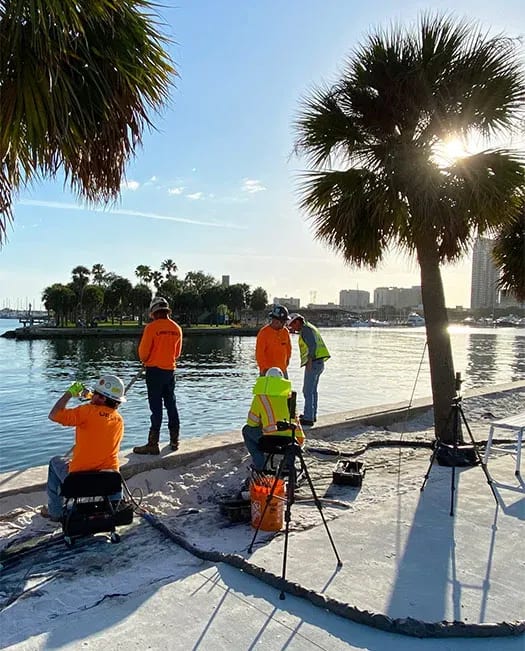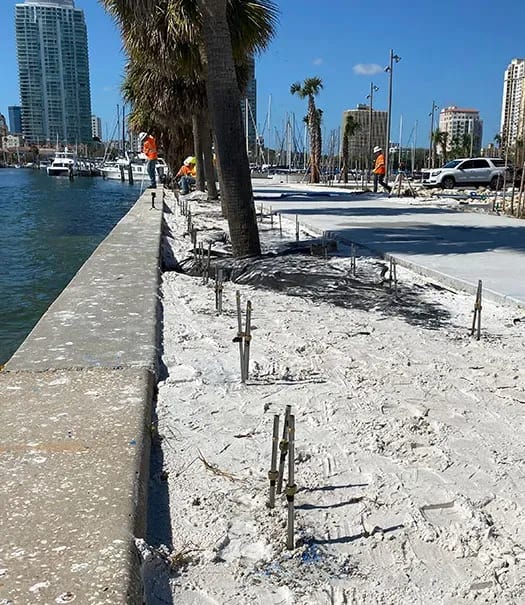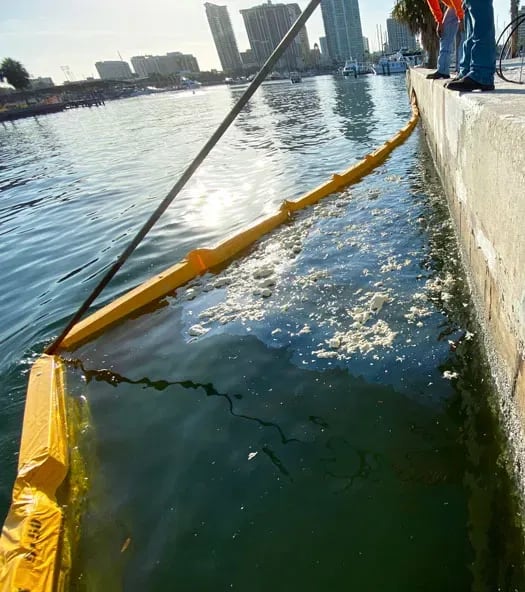Sea Wall Stabilization for St. Pete Pier
Problem
In St. Petersburg, Florida, work was moving forward on an important project for the city. City officials and their general contractor, PCL Construction, understood that the success of the $80 million St Pete Pier project relied heavily on the integrity of a 50+ year-old seawall that separated the downtown district from the new attractions being providing across the 26-acre project site. Joint sealing and soil stabilization along portions of the old seawall were necessary to protect the city’s investment. Leaking joints combined with years of tidal action had led to the loss of fines through the wall, resulting in voids beneath the surface and subsidence of soils behind the wall. With the grand opening of the new St. Pete Pier just a few short months away, project organizers contacted URETEK.
Analysis
Due to the age of the seawall, no plans were available to determine the exact design. The concrete panels were four feet wide with a depth to the water line during low tide of approximately eight feet. Typically, seawalls can suffer subsidence either by loss of fines through joints, loss of underlying soils from beneath the wall from tidal action, or a combination of both. To ensure that we provided a reliable, long-term solution, URETEK Deep Injection® (UDI) was proposed for the site, based on an injection plan designed to seal the joints of the concrete wall as well as permeate underlying sands to mitigate future loss of fines from tidal action.
Solution
URETEK crews applied UDI on four-foot centers starting approximately 18 inches off the back of the seawall. Injections were placed at depths of four, eight, and 12 feet. The four- and eight-foot injections served to seal the leaking joints, fill voids, and stabilize the surrounding soils. The deeper 12-foot injections were made into the underlying sands beneath the footing of the wall to permeate the sand and mitigate loss via tidal action. The original injection plan developed for the site included a second row of injections placed four feet behind the first row in a staggered position with injections at depths of four and eight feet. Due to the discovery of large voids near the face of the wall, this second row of injections was eliminated to allow coverage of a larger area of seawall and to control material usage.
Result
This was another project where URETEK’s long experience with seawall repair and maintenance paid dividends for the customer. During UDI, there was visual confirmation of large quantities of water being displaced from behind the wall. All joints in the work area were sealed, all identified voids were filled, and the surrounding soils were stabilized. Throughout the project, URETEK crews utilized containment booms to capture any cured polymer that might have escaped through seawall joints and cracks below the water’s surface. Upon completion of the project, city officials were extremely pleased.
URETEK Deep Injection® (UDI)
Widely referenced throughout our industry, UDI involves the injection of structural polymer into base and subgrade soils to increase the load bearing capacity. This is achieved by injecting the polymer through small holes drilled directly through the pavement structure to depths determined by site-specific analysis. Our URETEK 486 Star® material flows easily into voids and weak zones within the soil mass below. Through a controlled chemical reaction, the expanding polymer compacts surrounding soils and applies a controlled pressure on targeted areas of the affected pavement above. If needed, a multi-injection design plan is utilized to gently return the pavement to its original grade. The composite material quickly cures into a strong, dimensionally stable, and water-resistant geo-material, providing years of reliable service.
URETEK 486 Star®
URETEK 486 Star® polymer is a two-component, high-density, expanding thermoset polyurethane system. It was developed to be the ideal solution for under-sealing, void filling, lifting of settled pavement, stabilization and stiffening of weak soils, and for encapsulating and sealing buried infrastructure. URETEK 486 Star® is environmentally inert, non-toxic, and resists underground water erosion or weakening due to its industry-leading hydrophobic properties.


